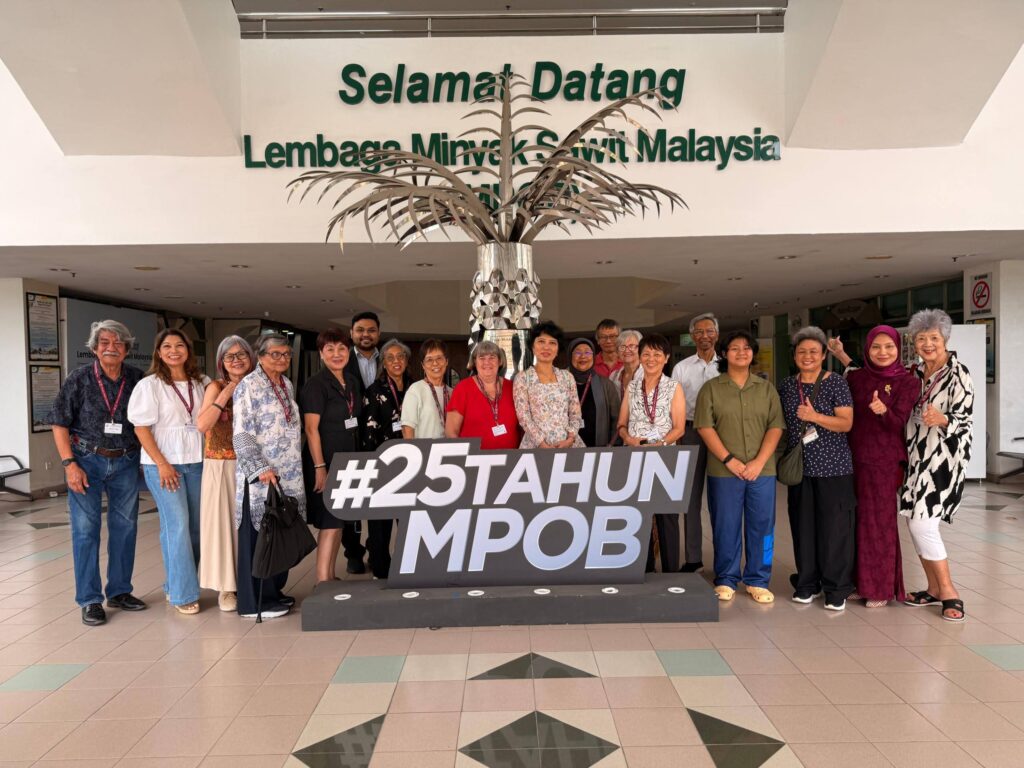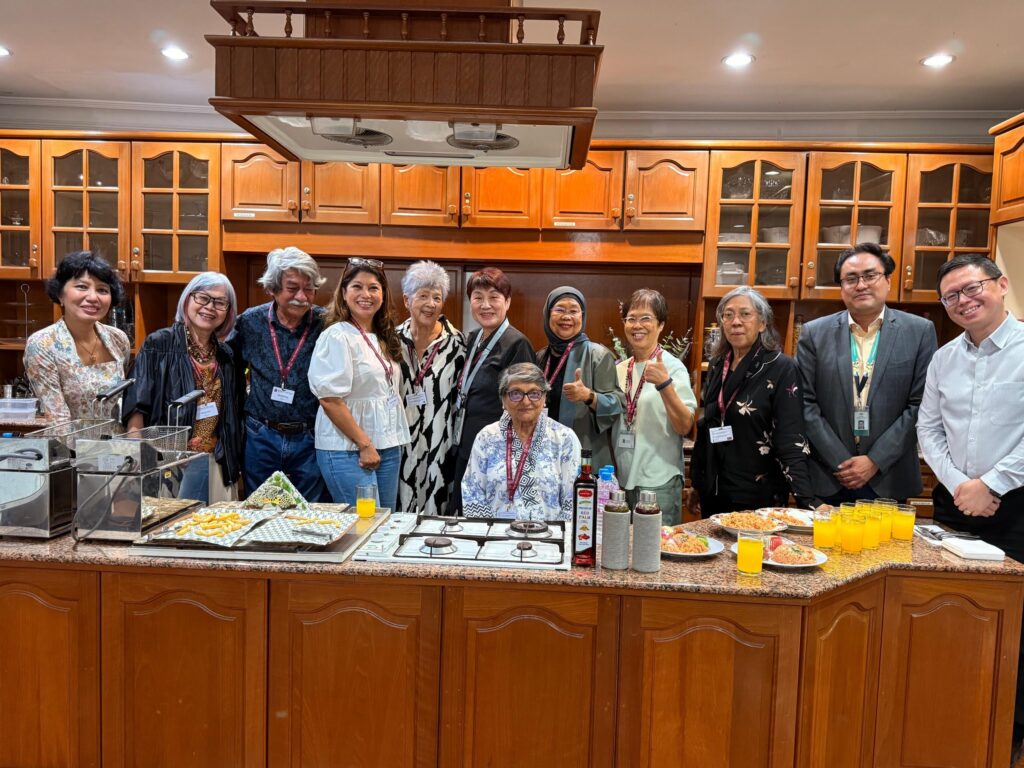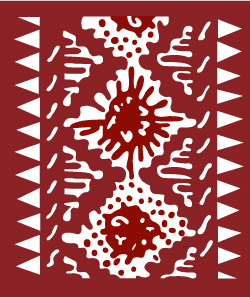
On 22nd of July, 15 Explorers and 4 guests of MCG visited the Malaysian Palm Oil Board. It was kindly hosted by Dr Ainie Kuntom and Pn Rosidah Radzian. It was an eye opener for many of us and indeed we came home richer in knowledge about the palm oil industry.
First stop was the Palm Gallery which is a mini museum of the history and development of the palm oil industry in Malaysia. En Ali Zulhusni took us through a journey starting from Africa to present day modernisation of the oil palm industry. Palm oil was used as early as 5000 years ago, being discovered in an Egyptian tomb in the late 1800s and used for centuries in African villages. It was interesting to see how palm oil was initially extracted in Africa using crude grinders and presses and then fast tracked to today’s modern mills and refineries in Malaysia. The Dutch brought the seeds of the Elaeis guineensis from Nigeria to Bogor, Indonesia while the British introduced the seeds to Malaysia. Then in 1917, oil palm seeds were sown on the Tennamaran Estate, making it the first commercial planting in the country. All commercial plantings are from the Tenera (Dura x Pisifera) for high yielding crops. We were shown what the seeds look like, and how they had been treated to ensure high yielding Tenera oil palms. Actual fruit bunches were displayed in the Gallery giving us first-hand look at the different oil palm species (Dura, Pisifera, Tenera and Oleifera).
It was a surprise to many that the oil palm produces two types of oil, crude palm oil from the mesocarp and crude palm kernel oil from the inner kernels. After a process of refining, bleaching and deodorisation the crude oils emerged as RBD palm oil and palm kernel oil. Further processing such as fractionation (process of cooling and filtration) results in a variety of oils with different properties and usage. These oils and their oleochemicals end up in our everyday uses ranging from edible usage as cooking oils, margarines, shortenings, biscuits, cakes, etc. to inedible uses as in soaps, detergents, cosmetics, toiletries, pharmaceuticals, etc.
En Muhammad Shakir gave a talk on MPOB and overview of the Malaysian Palm Oil industry. MPOB’s mission is to enhance the well-being of the Malaysian palm oil industry through excellent research and development and services. We were informed that the industry is highly licensed, there being 24 licence categories in total for plantations, trading, manufacturing, transportation, bulking facilities, quality and export. In addition, the Malaysian Sustainable Palm Oil Certification (MSPO) is recognised worldwide, thus, all palm oil exporters are encouraged to have this certificate.
Our next speaker, Dr Radhika Loganathan presented a talk on Nutritional Attributes of Palm Oil. She informed us of the Saturated Fat Controversy, how the Ancel Keys entire lipid hypothesis was based on flawed and fraudulent science. This saturated fat hypothesis of being harmful for health had been promoted since 1968. Multiple studies have now revealed that saturated fat intake shows no association with cardiovascular disease and strokes. on the other hand, Dr Radhika warned of the dangers of trans fats, which raise bad (LDL) cholesterol and lower the good (HDL) cholesterol, increase risk of heart diseases and is also associated with higher risk of developing type 2 diabetes. Palm oil products are trans free and can be safely consumed. She also highlighted that palm oil and olive oil have similar effects on blood lipids.
While still digesting all the new information, there’s more benefits to be found. The oil contains phytonutrients such as vitamin E in the form of tocotrienols and tocopherols, phytosterols, carotenoids, co-enzyme Q10, and more. Palm oil has the highest tocotrienol and tocopherol content compared to other seed oils. Tocotrienols can be extracted and concentrated in pills. The benefits of consuming tocotrienols are many, including, neuroprotection, radioprotection, cardiovascular prevention, skin protection, cancer prevention, immune booster, hormone regulation, bone protection, and have anti-inflammatory and antioxidant properties. All these benefits have been well researched and confirmed in peer reviewed publications.
Then we were introduced to a premium oil (Red Palm Oil), which is available via a special process of maintaining the carotenoids in the oil. Consuming biscuits made with red palm oil was found to increase the overall health of school children. Our final agenda of the day was a visit to the Demonstration Kitchen, where we were given a short talk on frying by Dr Hazrati Wazir. Unlike other vegetable oils, palm oil has high oxidative stability due to its saturated fatty acids, making it a very versatile and suitable oil for deep fat frying. A frying demonstration showed the differences in frying potato chips with palm cooking oil and canola oil (Figure 4). Last, but not least, we were treated to a sumptuous lunch of tomato rice with fried chicken and desserts.
Everyone was given a booklet on Red Palm Oil and a bottle of the premium red palm oil. Many of us ended up in the Palm Shoppe happily buying souvenirs, red palm biscuits and tocotrienols, etc. Once again, this event was made possible thanks to Dr Ainie and Pn. Rosidah for hosting the event and Corinne for helping with coordinating the trip. We came away not only with gifts and souvenirs, but more importantly, a better knowledge of the palm oil industry, its importance to the Malaysian economy, and the many uses and nutritional benefits of using palm oil.
Review with many thanks to Siew Wai Lin

